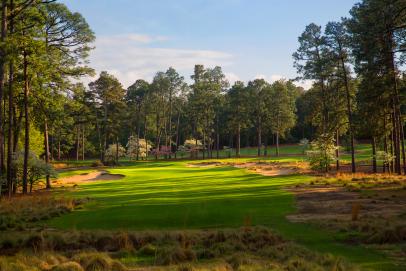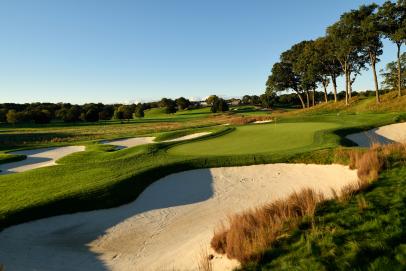New Courses
I got to play Pinehurst #10—it's unlike anything I’ve seen
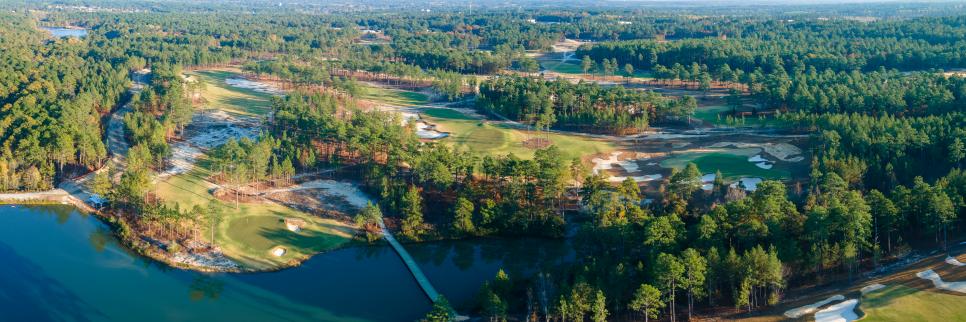
Pinehurst never stands still for long. The history of the North Carolina resort is one of continual expansion and evolution, and the last 15 years have been especially consequential, culminating with the opening of the newest course, Pinehurst #10, this month.
Around 2010, the resort approached Bill Coore and Ben Crenshaw about reviving the indigenous character of the #2 course prior to the 2014 U.S. Open. This meant removing the Bermuda grass roughs lining the fairways, added in the early 1970s, and restoring the sand and wiregrass buffers along the edges of the holes, and also remodeling the bunkers (the #2 course hosts the U.S. Open again this June).
About five years later, Pinehurst hired Gil Hanse and Jim Wagner to remodel the #4 course, a design that had drastically changed appearance three times over the previous 50 years. At the same time, Hanse and Wagner introduced The Cradle short course, one of the resort’s most popular amenities, and the 72,000-square-foot Thistle Du putting green. Shortly thereafter, the #3 course was remodeled by Kye Goalby (designer of The Tree Farm, with Zac Blair) in similar fashion to #2.
The last course Pinehurst added to the portfolio was the #9 course in 2012, though that was technically an acquisition of the former Pinehurst National, a 1988 Jack Nicklaus design. The last new build was the #8 course, a Tom Fazio design opened in 1996, that’s now coming off its own renovation.
#10 is the first newly constructed 18-hole Pinehurst course in nearly 30 years. The Tom Doak-design is located on a 900-acre parcel of land the resort acquired in 2010, three miles to the south, branded “Pinehurst Sandmines” (there are plans for more amenities, including cottages and another course rumored to be designed by Bill Coore and Ben Crenshaw). Parts of the site were an old sand mining operation that went defunct in the 1970s, leaving behind quarries and excavated sections littered with conical spoils that have revegetated with wild underbrush and pines.
This was also the site of “The Pit,” a 1985 Dan Maples design that closed permanently in 2010. Parts of #10’s first nine touch defunct sections of The Pit, but the holes and corridors are unique and there’s no evidence of overlap.
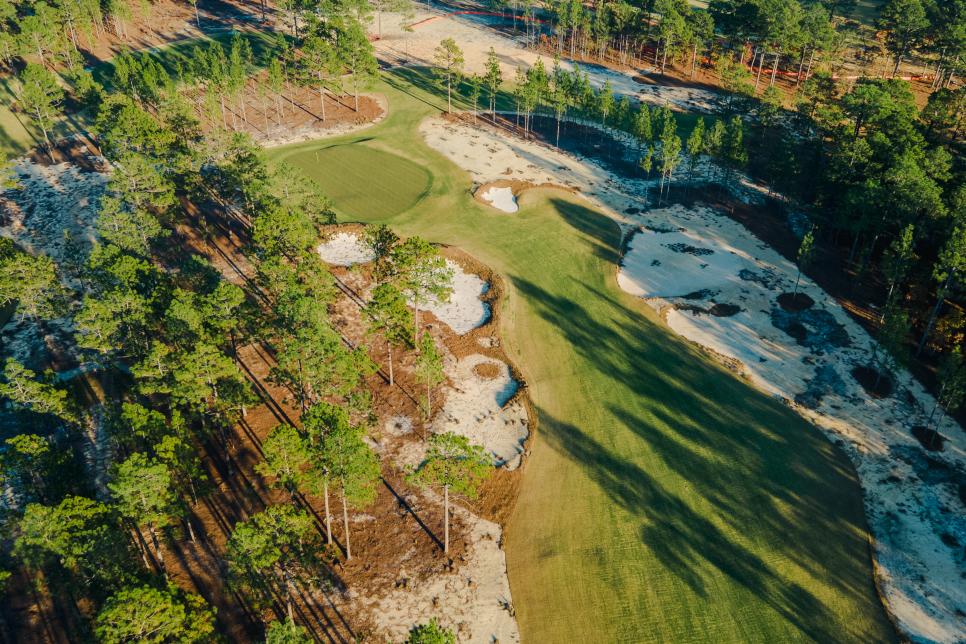
Doak’s design reflects elements of other Pinehurst courses, specifically the sandscapes and bold whimsy of Pinehurst #4’s greens, and the rolling, isolated terrain of Pinehurst #8.
At the same time, it is entirely apart. The land possesses extremities and capacities that surpass other Pinehurst settings. Once the routing moves away from the calmer area around the clubhouse, the holes become increasingly expansive and charged with power, like a freight train building momentum as the layout barrels into the dark heart of the property, yet with control and purpose.
The land is the show. Fairways cascade over long, bending, sometimes rumpled slopes and wander into tighter compartments surrounded by the bizarre mining archeology. Drives repeatedly play blind or semi-blind over crests and sand washes that obscure the landing areas, so players must select foreground or background targets for orientation. One wonders if Doak’s recent immersion recreating C.B. Macdonald’s The Lido at Sand Valley, where fairways are often invisible behind earthen ramparts and bunkers, necessitating alternative aiming objects (rocks, flagpoles, roofs), expanded his outlook on the psychological impact of obfuscation.
The lack of fairway visibility is something that would scare other architects into a bad routing or implore the mobilization of bulldozers to knock down the land. Doak, steeped in links golf, and more recently, Macdonald, is undeterred.
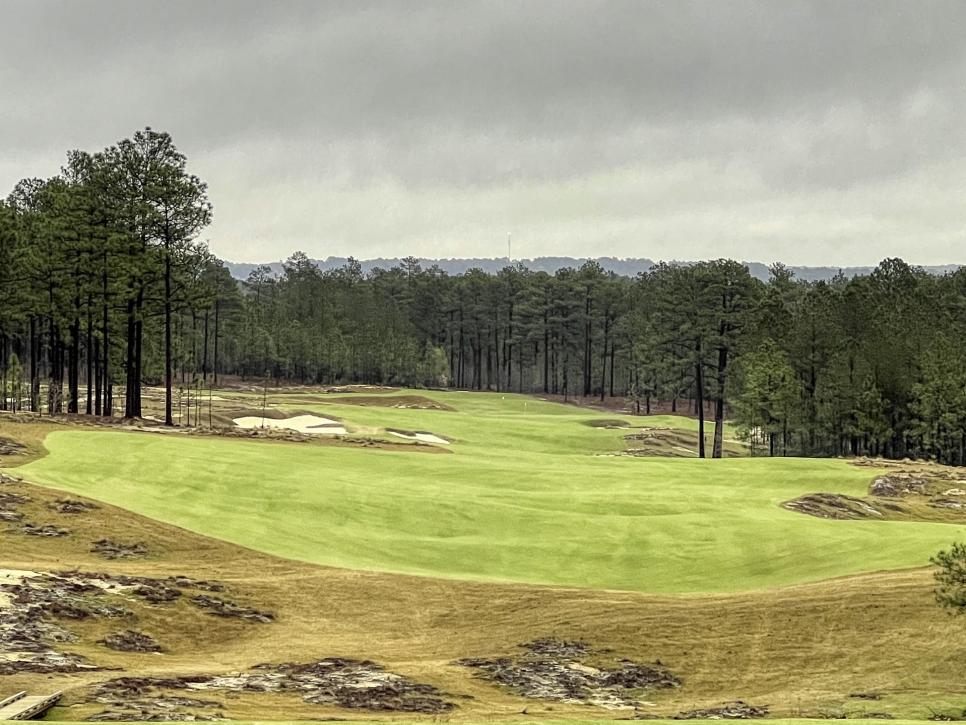
The massive par-5 10th rolls impressively over its terrain.
As the broad, canted fairways slip over humps and ridges it’s difficult to tell what was created and what wasn’t. The green complexes, however, are products of imagination.
Some like three, nine and 16 puddle on natural grades, but Doak and lead associate Angela Moser have built most others intentionally, propping up edges and infusing them with helping backstops, wings and shoulders that will more often than not curl rolling shots back onto the putting surface. The architecture demands diligence in getting drives into high positions, then, if coming in from proper angles, turns toward wanting to help move balls inward and internally, the opposite of #2.
As if to ensure the point isn’t missed, four greens have distinct bowl shapes and others possess funneling components. Greenside bunkers are few, with most pulled back 10 or 20 yards, and #10 practically begs golfers to play the ball on the ground on and into the greens. Most are surrounded by short grass and broad safety areas, though series of mounds sometimes protect one side of the putting surface, like those left of the fourth and 12th greens (all the more reason to bump the ball over them).
There’s something simultaneously familiar and exotic about #2. The setting of sand and pines and slight wildness is the native color of Pinehurst. There are also holes that are unlike anything else, not just here but anywhere.
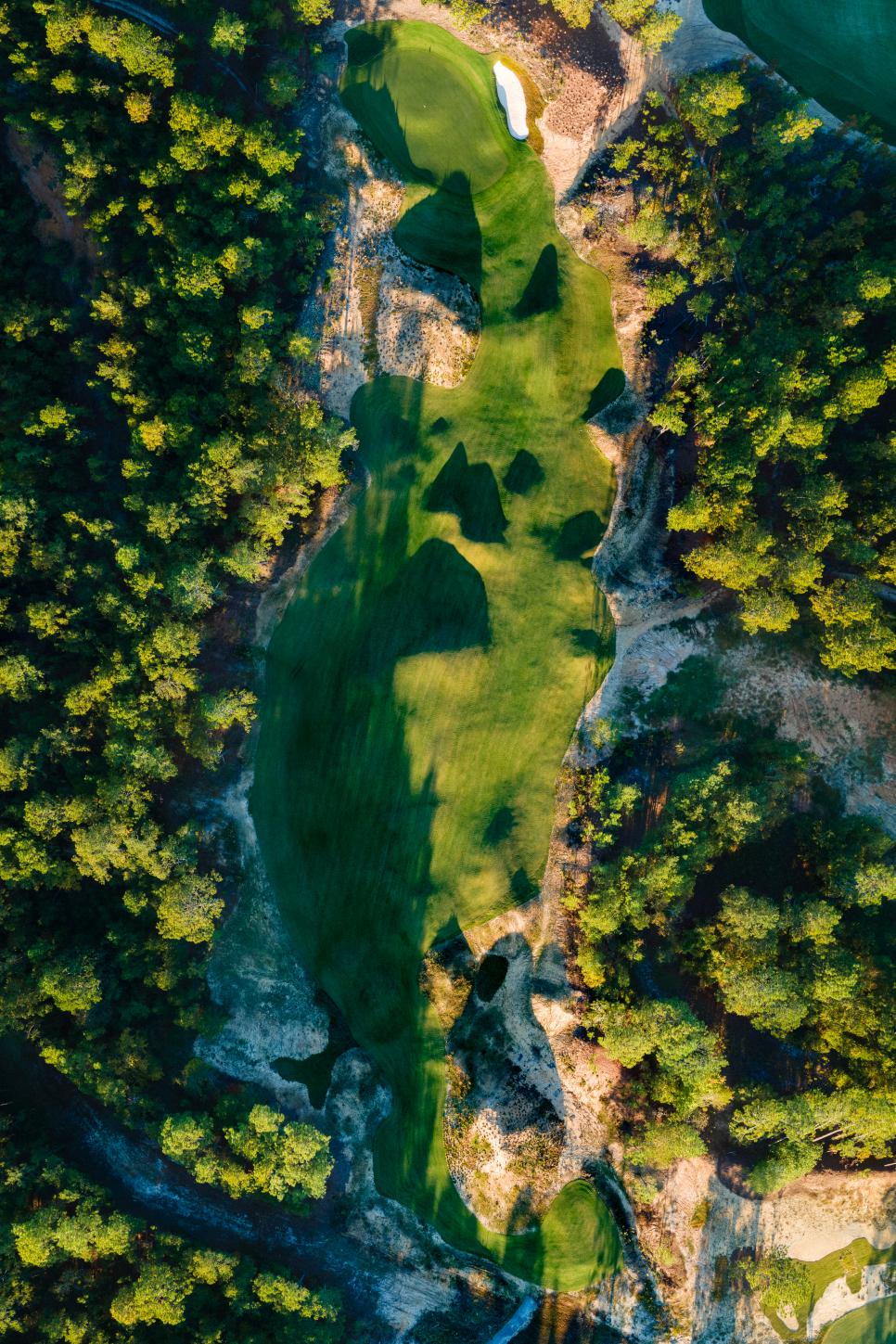
The par-4 eighth at Pinehurst No. 10.
The par-4 eighth is a detour into a hall of mirrors. The drive is blind past a slag heap and needs to favor the right, with the conical bumper embankments bordering the hole on either side. It plays through the belly of the mined portion of the property and the fairway is a bubbling cauldron of hillocks and bumps with a high ridge section in the middle that kicks balls into channels to the right and the left.
A sand escarpment shields the front and left side of a green carved into a bowled depression of high surrounding dunes, so approaches played from the left side of the fairway are entirely blind, while those from the right get a peek at the flag.
Three other holes strike me as originals: The par-4 sixth and par-5 12th both play to semi-blind, elevated fairways, then drop over sand barrens into lower theaters toward collecting greens. The 12th green is particularly remarkable, bunkerless and embedded in a field of short grass, seemingly undefended other than the swim of contours that plunge through the putting surface.
Few two-shot par 3s are as distinctive at the 270-yard 14th, a figurine impression of the nearby eighth with a multi-level green turned at an angle behind two grassed spoils and a taller mining dune behind. Even from the 225-yard white tees the wise play is short and right to leave a pitch into the rising length of the putting surface.

The green at the long par-3 14th is nestled against a mining spoil.
#2, ranked 29th on America’s 100 Greatest Courses, has always been one of the country’s great, ingenious courses and the centerpiece of the resort. But golfers come to Pinehurst to sample all the fare—the range of golf, charm of the Village, the sense that time moves slower here. The strength is in the deep and enriching menu of courses that are all different and all a little the same. Yet as good as the golf is overall, no one is getting on a plane just to see #4, #8 or any other not labeled #2.
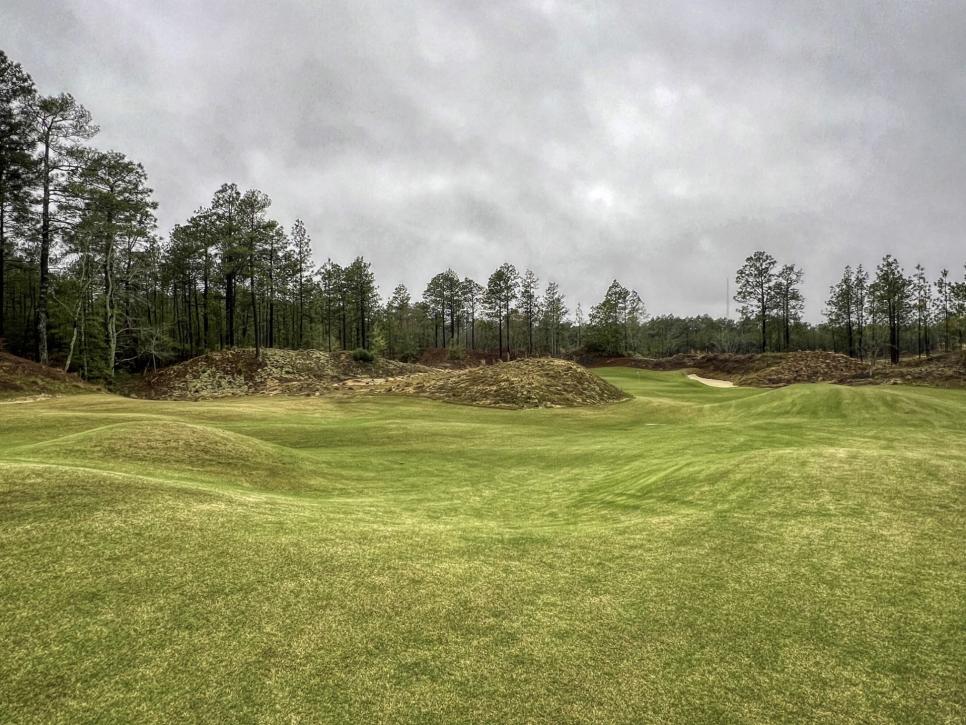
Peek-a-boo: The eighth green is only visible from the right section of the bubbling fairway.
#10, tasteful and aesthetically laid out with surprising moments of unorthodoxy, changes that. While there are some discordant notes (the 15th, playing across a water feature with repeating moguls along the bank, a lone pine remaining on the shore and a dizzying green with a cupped front section would be at home on any Jim Engh course, and the floating, fractured green at 17 with the swooping front right tongue brings strong Mike Strantz vibes), its middle holes alone from five through 14 make it a design of consequence. Book your tickets now.
